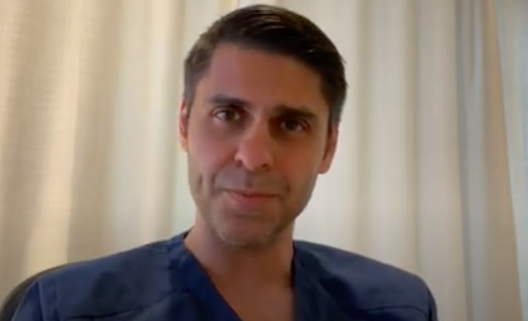A New Generation of Minimally Invasive Spine Surgery
October 10, 2024
The decision to have spinal surgery is not one patients take lightly. Traditionally, it required open surgical techniques with large incisions and a great deal of muscle dissection. That resulted in long recovery times for patients. In the recent past, minimally invasive techniques offered potential patient benefits like fewer complications, less scarring and quicker recoveries.
These days, some patients have the option of ultra-minimally invasive spinal surgery, which could lead to even shorter recoveries.
 Kamran Parsa, DO, is a board-certified neurosurgeon who completed fellowship training in complex and minimally invasive spine surgery at Mayo Clinic in Jacksonville, Fla. He practices neurosurgery, including ultra-minimally invasive spine surgery, at Southwest Healthcare Palmdale Regional Medical Center.
Kamran Parsa, DO, is a board-certified neurosurgeon who completed fellowship training in complex and minimally invasive spine surgery at Mayo Clinic in Jacksonville, Fla. He practices neurosurgery, including ultra-minimally invasive spine surgery, at Southwest Healthcare Palmdale Regional Medical Center.
“With ultra-minimally invasive surgery, we are doing some spinal procedures through cameras where the incision is the size of my pinky finger for decompression surgeries and for fusion surgeries, multiple of these smaller incisions on your back,” Dr. Parsa explains. “It’s the latest generation of minimizing muscle dissection in surgery patients and achieving the same outcomes as the large incisions.”
The importance of getting back to daily life
Traditional, minimally invasive spinal surgery was a step in the right direction in terms of reducing the amount of time patients needed to recover. Now, with ultra-minimally invasive surgical techniques, Dr. Parsa has seen even faster recoveries in patients due to the lack of muscle dissection.
“With ultra-minimally invasive spine surgery, the muscles are barely disrupted,” says Dr. Parsa. “Patients get back to their lives within the same day, the next day or at least within a week — compared to what used to take sometimes four, five or six months. It can dramatically improve recovery and patient outcomes.”
It is important to understand what recovery from any type of spinal surgery actually means. It is still not a miracle cure.
“Recovery is not completely getting back to full activity,” Dr. Parsa explains. “We are talking getting up and walking, getting to the bathroom, being able to do daily functions on your own. You still have some pain, but you are significantly at a point that is tolerable.”
However, Dr. Parsa reports that after ultra-minimally invasive spinal surgery, many patients return home the day of the procedure or the next day.
Is ultra-minimally invasive surgery right for you?
Ultra-minimally invasive spinal surgery is not an option for every spinal condition. Your age may also be a factor. To find out if it’s right for you, start by talking with your doctor.
If you are experiencing pain levels that affect your quality of life and you’ve tried things like physical therapy, chiropractic treatment and spinal injections without relief, your doctor may decide surgery is the next step.
Some spinal conditions, such as scoliosis and those that call for complex reconstruction, must still require surgery with larger incisions. However, Dr. Parsa is optimistic that this may change.
“I’m sure in the near future, the equipment and the technology will catch up,” he says.
Watch Dr. Parsa and his patient, Marie, discuss her ultra-minimally invasive spinal fusion
Individual results may vary. There are risks associated with any surgical procedure. Talk with your doctor about these risks to find out if ultra-minimally invasive surgery is right for you.
